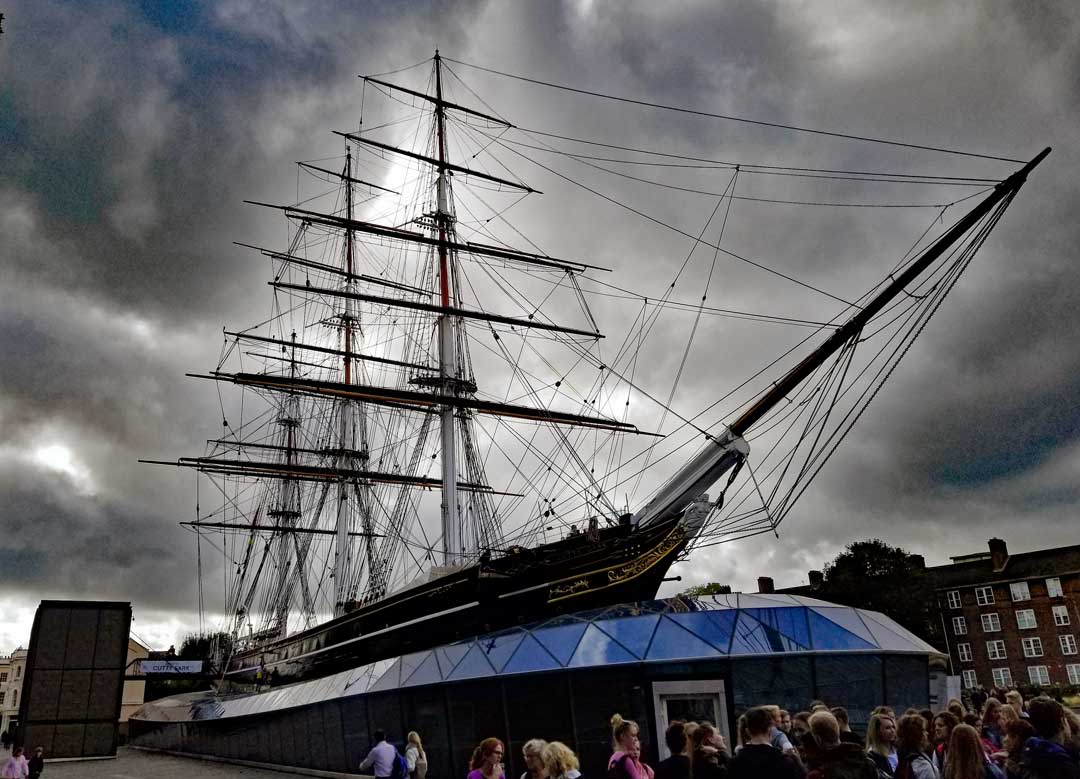
The Clipper Cutty Sark was built on the River Clyde in Scotland in 1869 for Jock Willis Shipping Line. It was originally designed to carry Tea from China to England and to do this as fast as possible. A Clipper is a three masted, square rigged ship with a narrow hull and a shallow keel, this was important when sailing up the rivers in China to load Tea. It was one of the last Tea Clippers ever built and also one the fastest, actually it was likely the fastest.
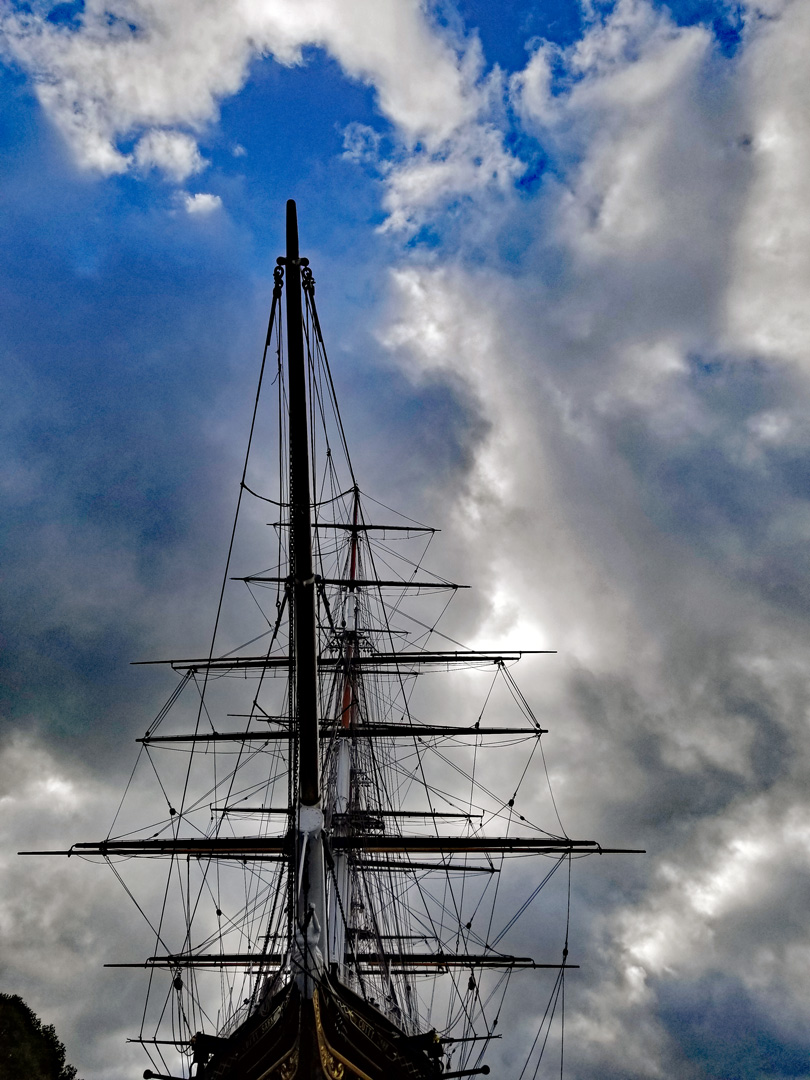
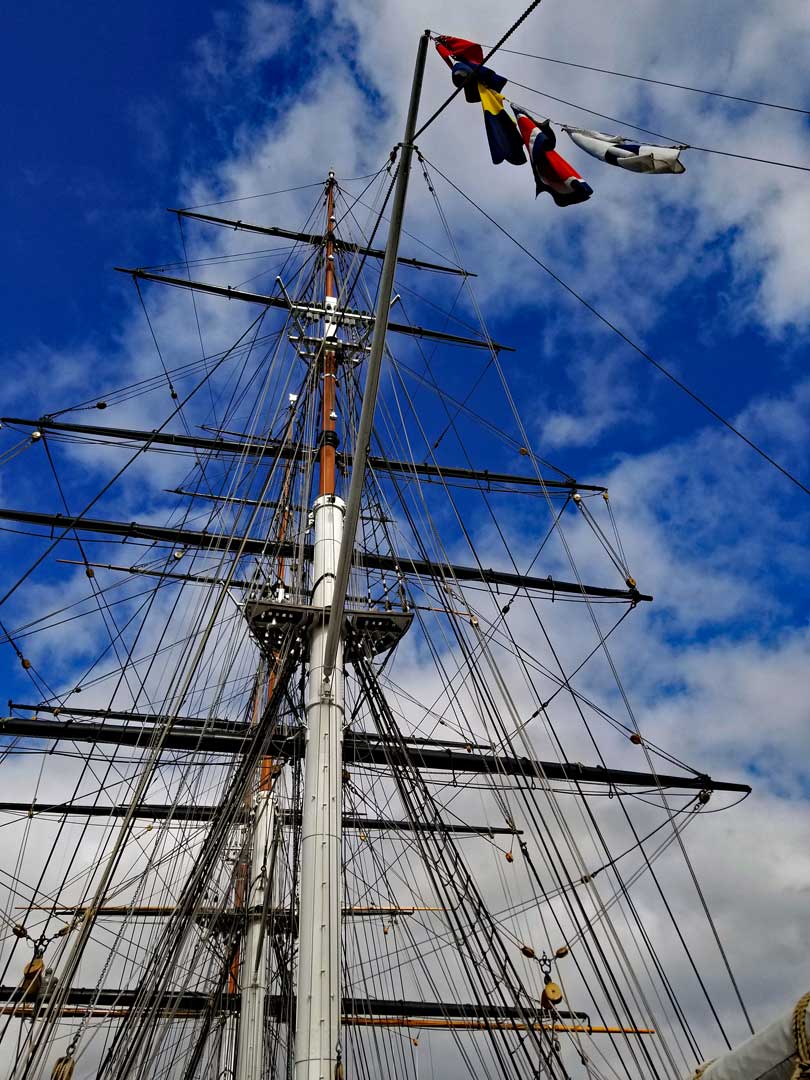
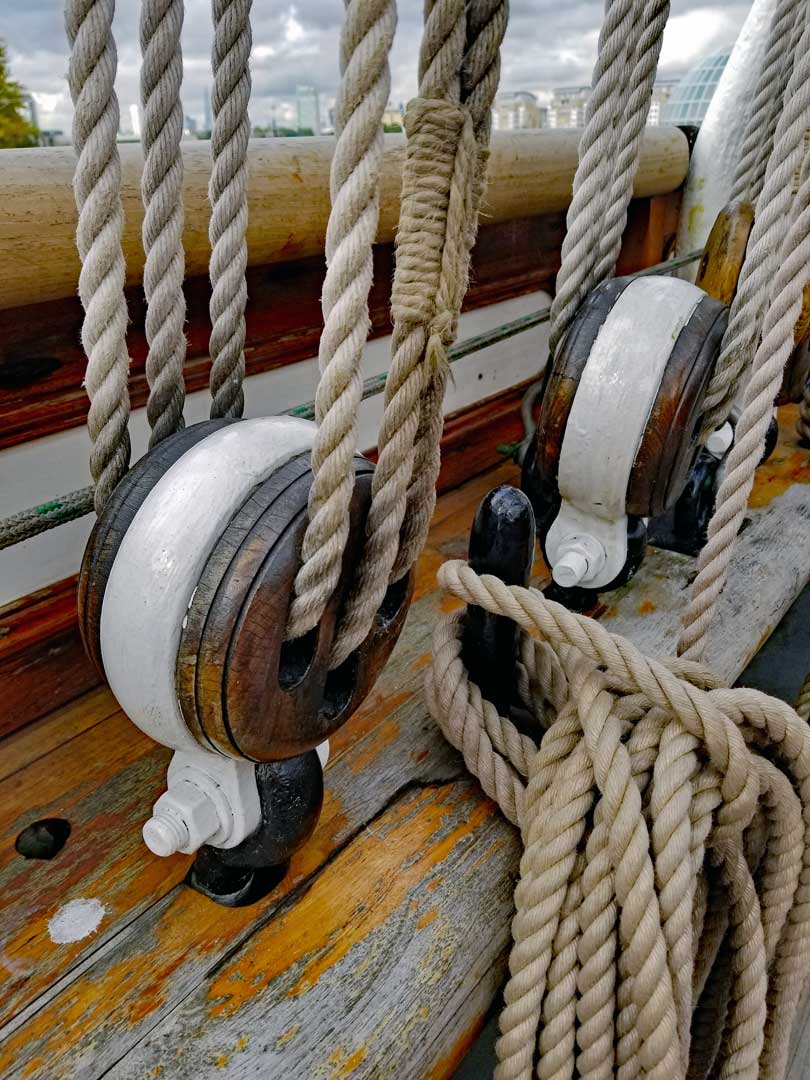
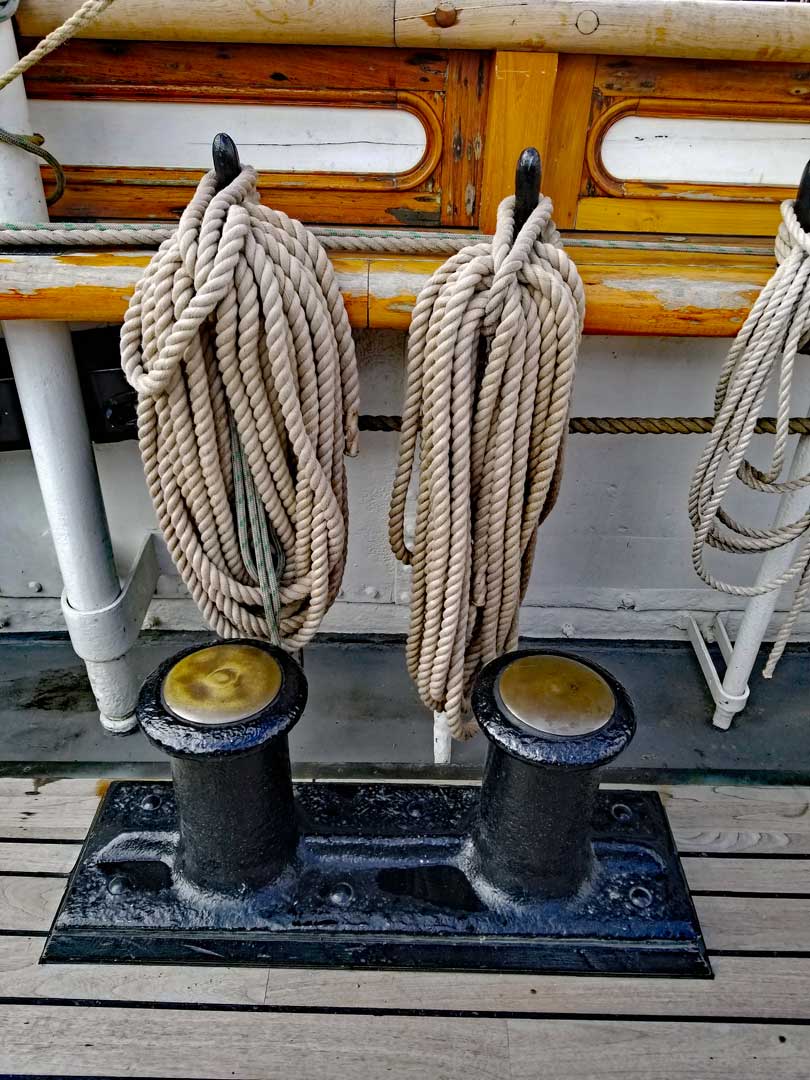
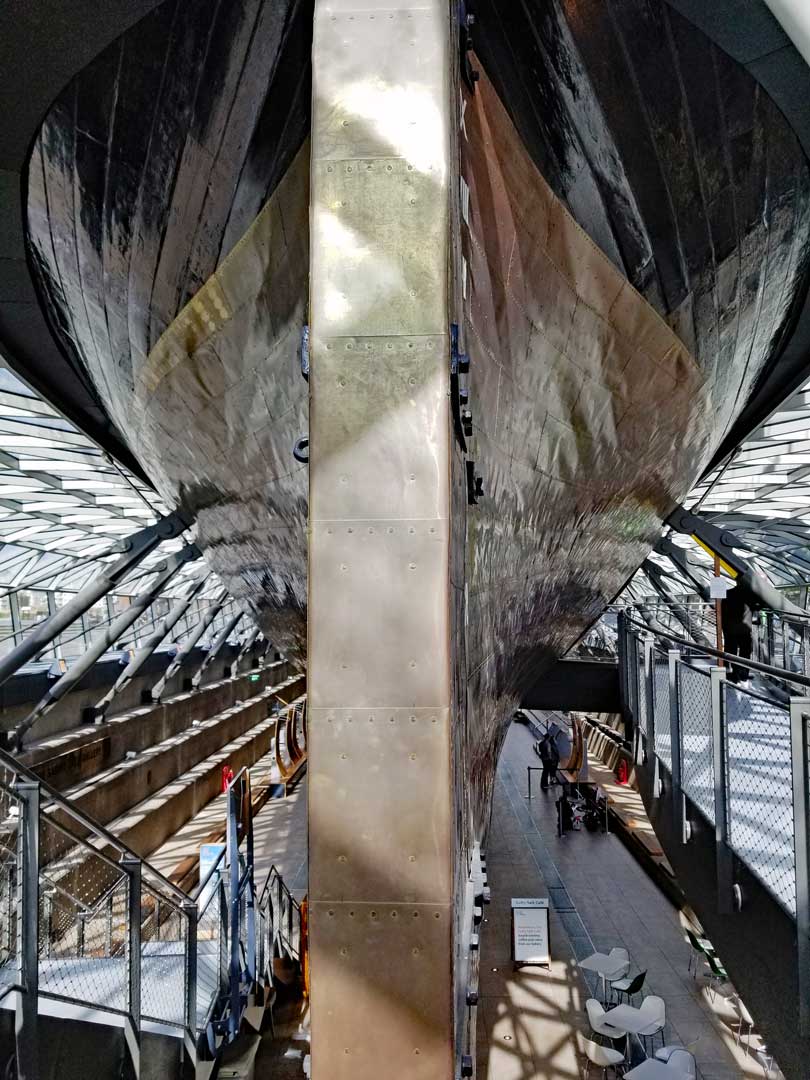
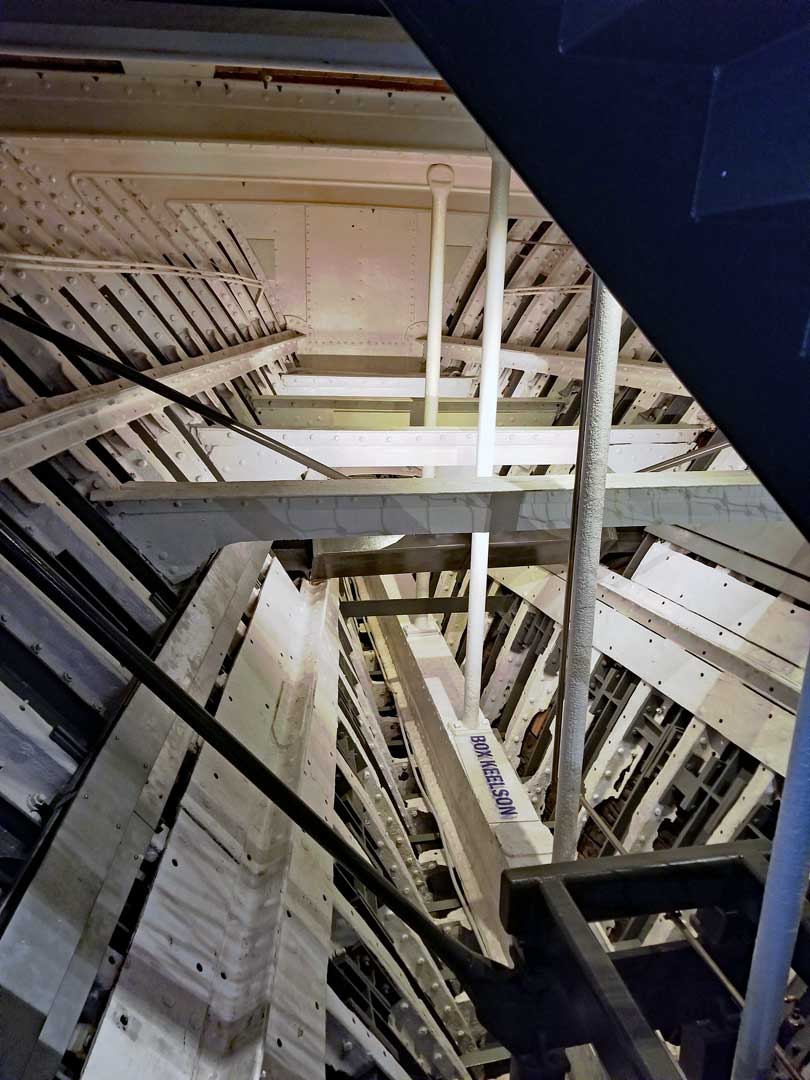
The Cutty Sark was built from East India Teak for the portions above the waterline while American Rock Elm was used for the bottom parts. The deck was made of 3.5″ Teak and the tween deck from 3″ Yellow Pine. The rudder was made from English Oak. Cutty Sark was built with three decks; the Main deck, the tween deck and the lower Hold.
The Liverpool house was at the stern of the ship and it held accommodations for the Master and also the Masters Saloon which was the most luxurious part of the Cutty Sark. It has a big wooden table for studying charts and to dine on. The Saloon has very nicely aged Mahogany paneling all around. The Liverpool house also accommodated a pantry, a head and accommodations for the First and Second Mates as well as the Steward. The portions below the main deck were mainly used to carry cargo.
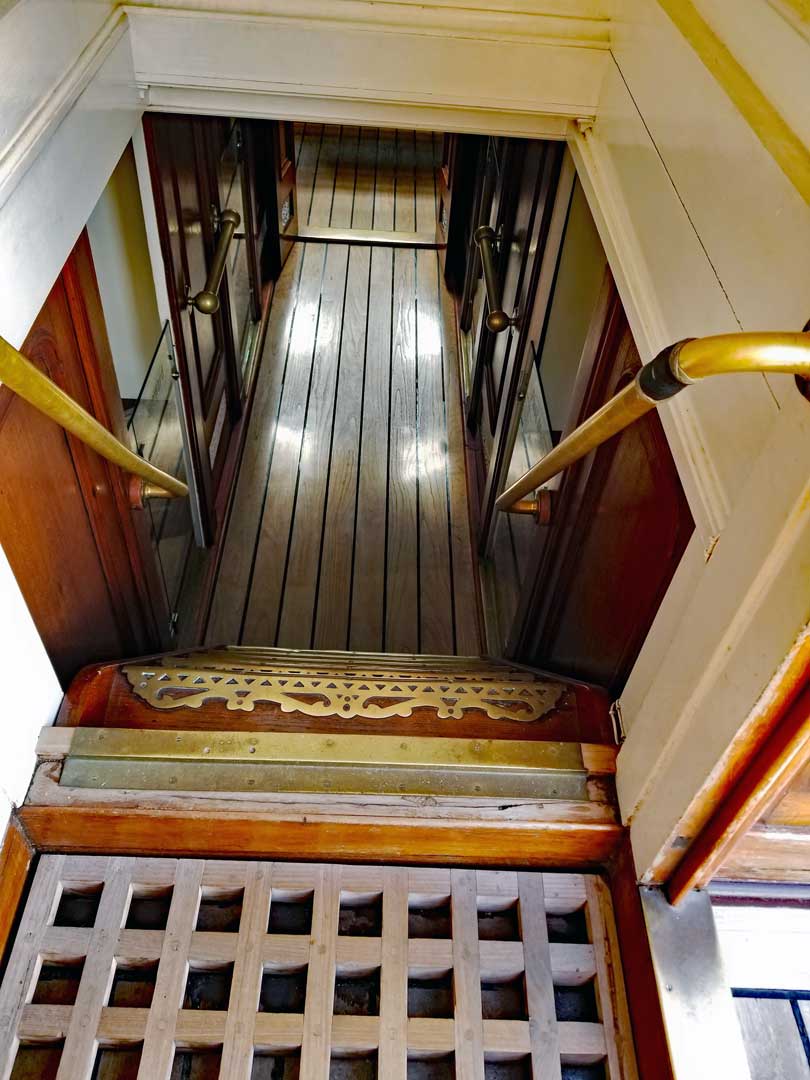
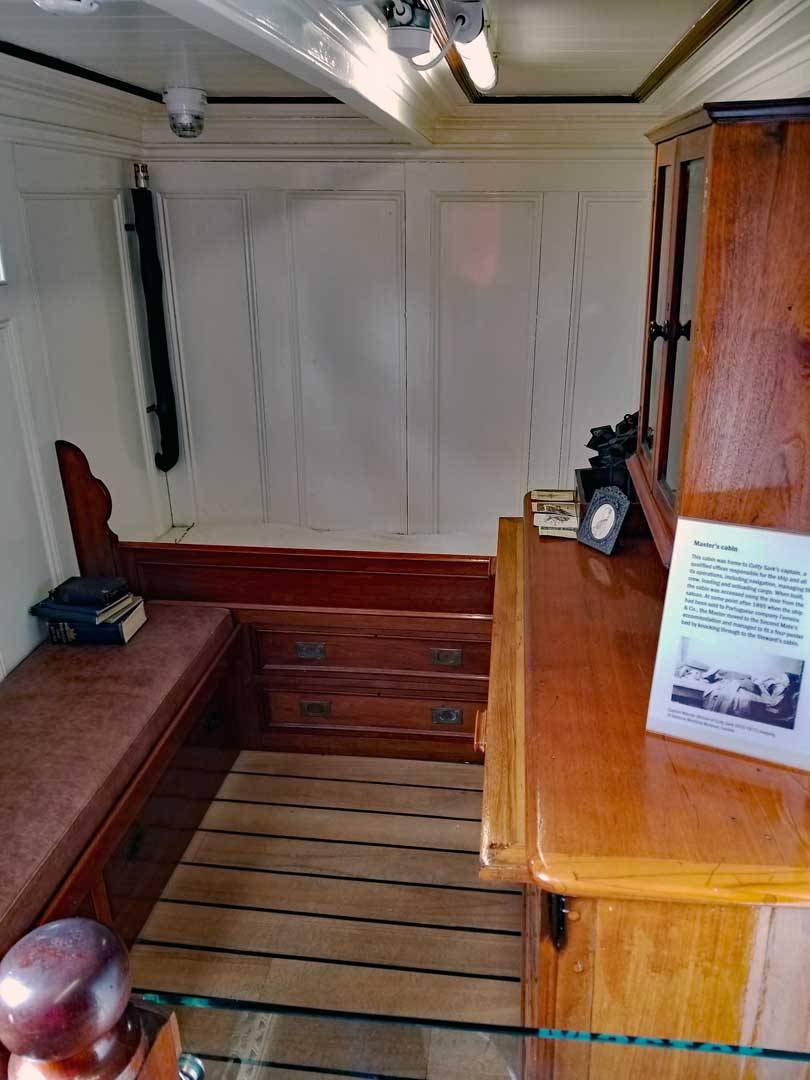
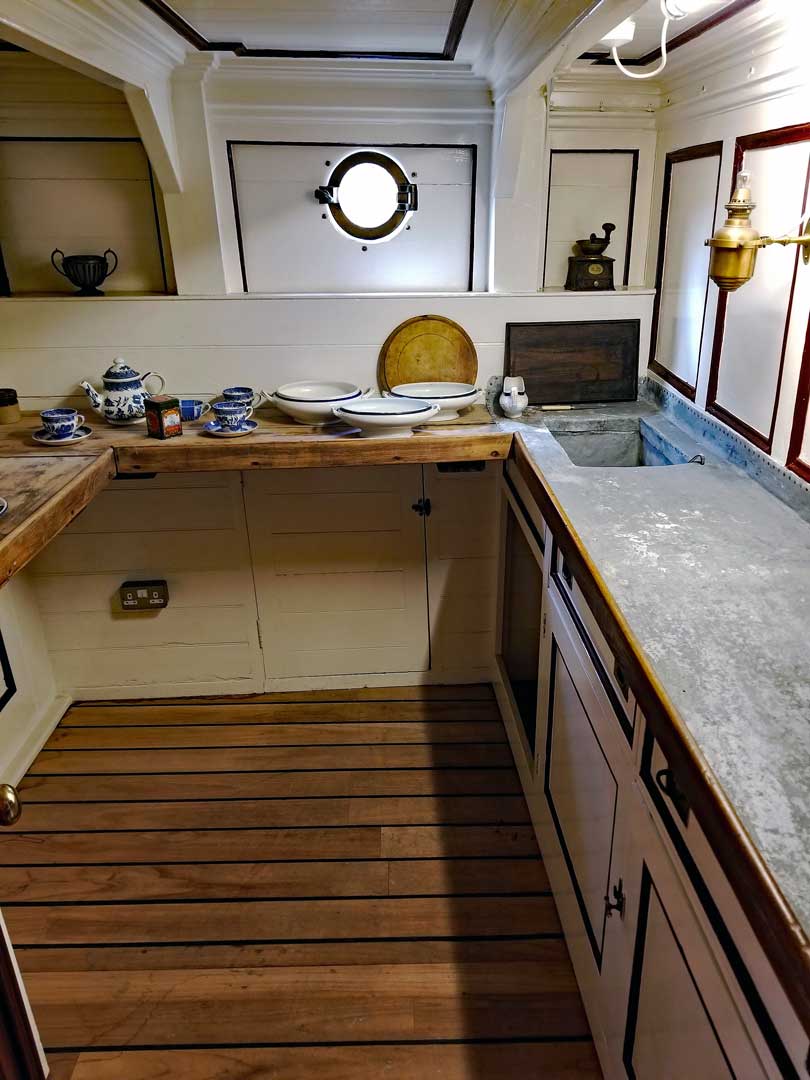
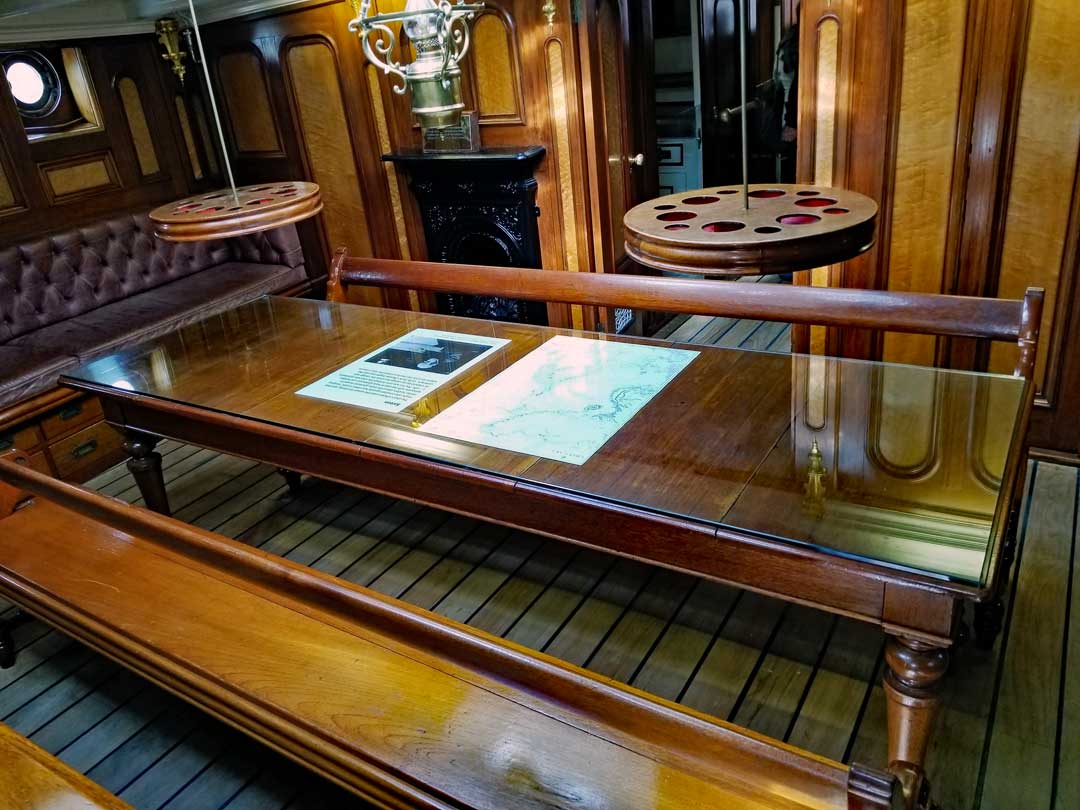
In 1872 a forward deckhouse was added to house the crew that were not housed in the aft deckhouse, they had previously slept under deck in the forward part of the Cutty Sark. In addition it held the workshop for the carpenter and the sailmaker as well as the Galley.
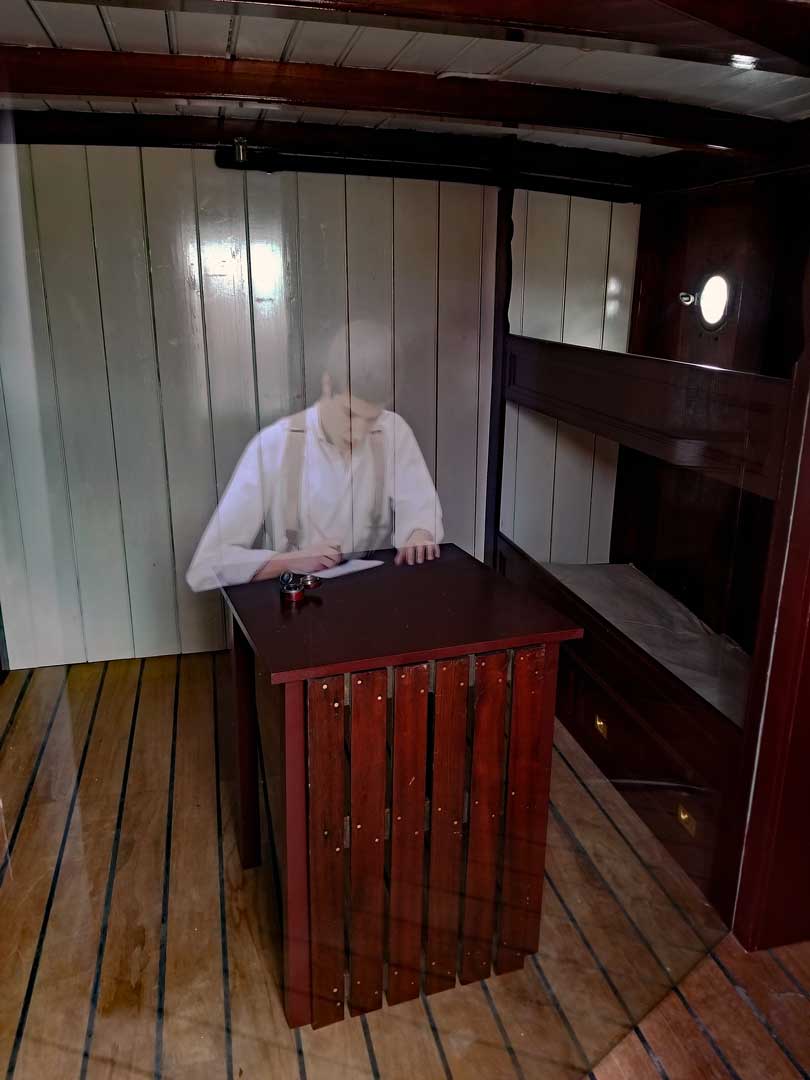
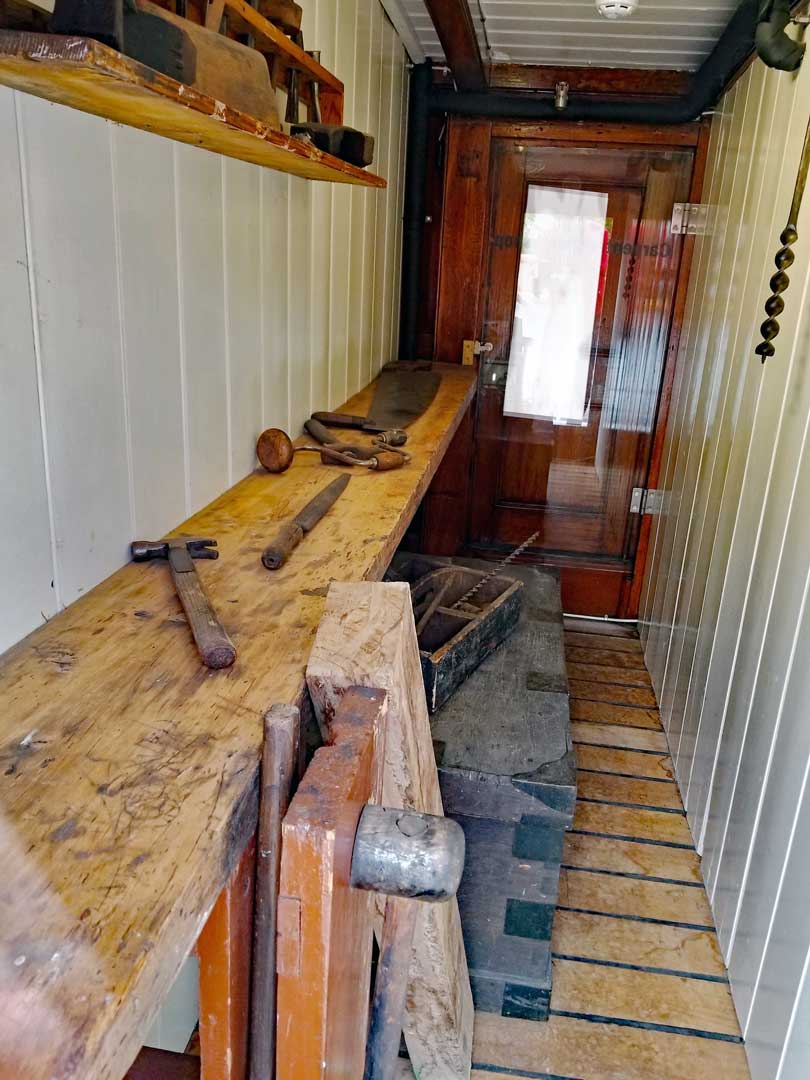
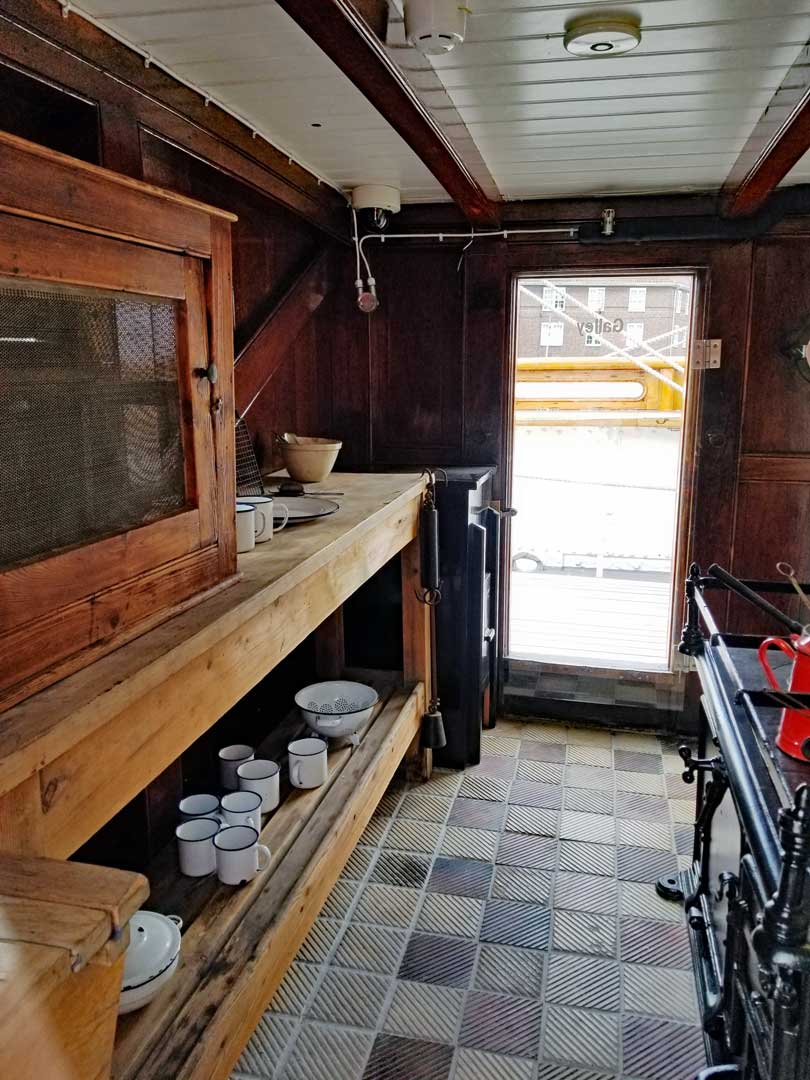
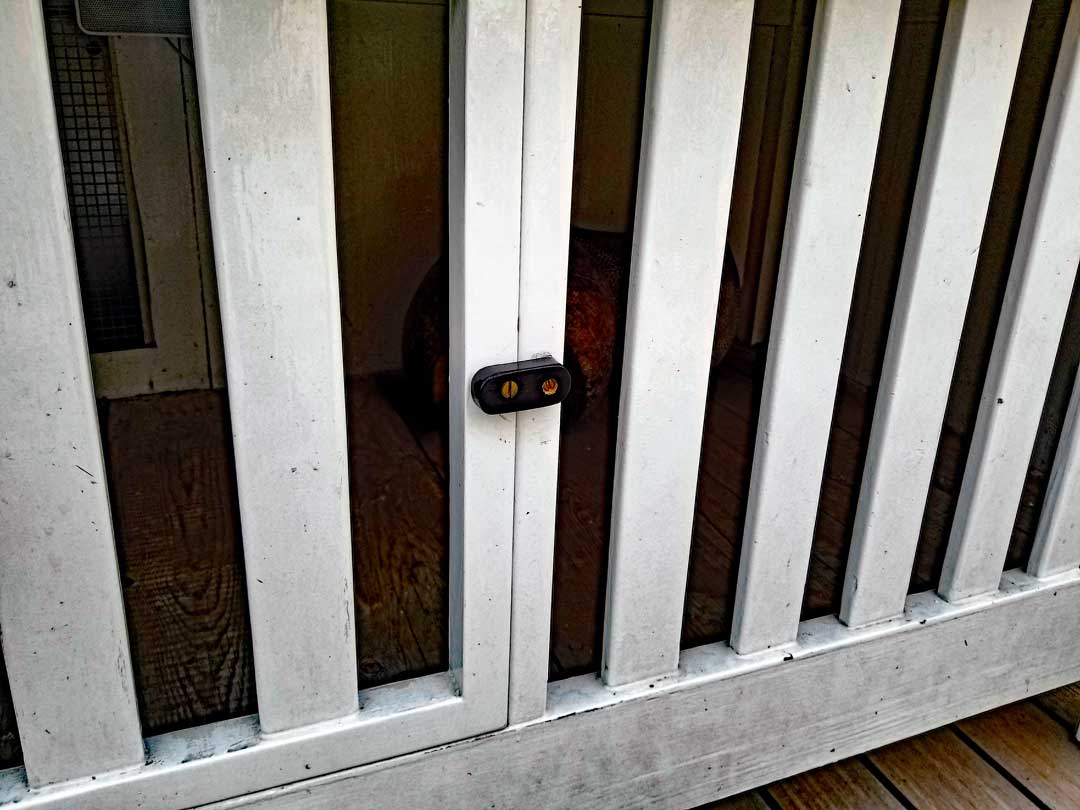
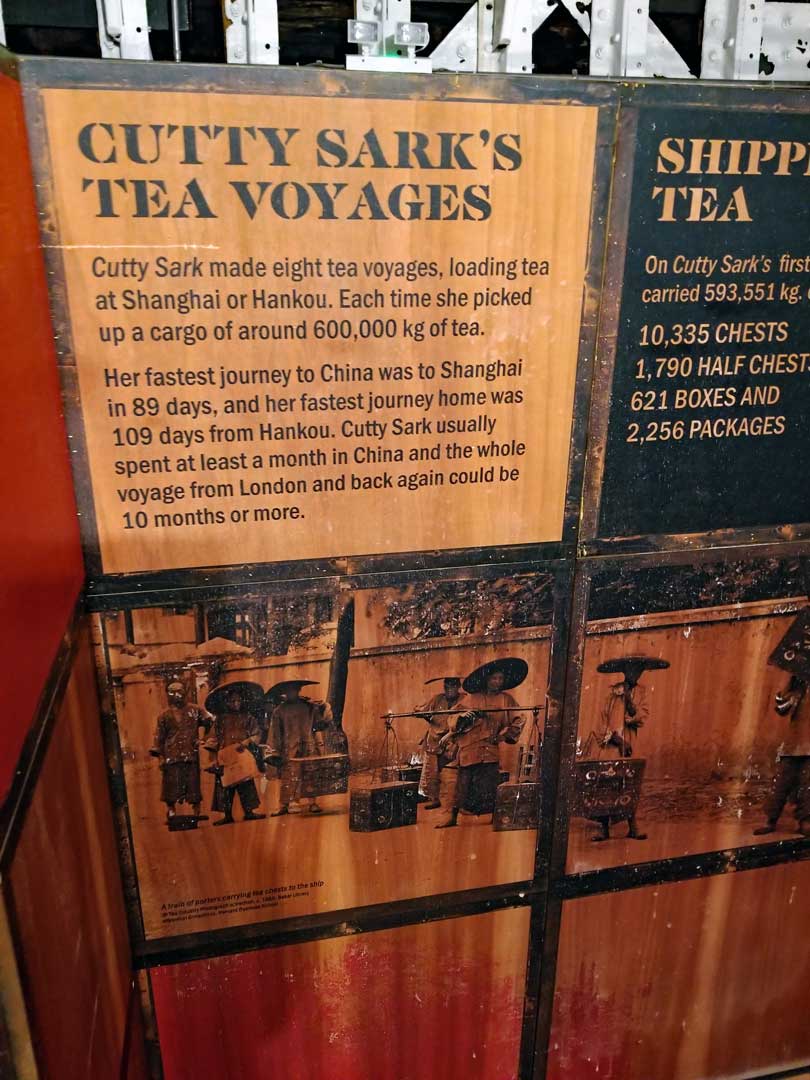
The cargo that Cutty Sark was built for was tea from China. As steamships came onto the scene in the latter half of the 1800’s, they started competing for the cargo. With steamers becoming faster with improvements in the steam engines and since the steamers were able to use the shorter Suez Canal route to China that was not well suited for a Clipper, even the fast Cutty Sark (17.5 knots was the highest speed recorded) eventually became a victim of the changing times. There used to be a premium paid to the ship that arrived first with the first Tea of the year, so speed was very important. After the Tea trade was gone for the sailing ships there were efforts made to keep Cutty Sark sailing with other cargo, such as Wool from Australia and at times she had other freight going to Australia, such as the piano seen below. However the glory years had definitely come to an end and she was eventually sold in 1895 to a Portuguese firm for £1,250.00 and renamed “Ferreira” after the owner of the firm that bought her.
After having had many owners and seen many events she came to England in 1954 and was placed in a dry dock in Greenwich in South East London. She was carefully restored and re-rigged to be ready for exhibition. The Duke of Edinburgh was instrumental in setting up the Cutty Sark Preservation Society in 1951 and laid the foundation stone for the dry dock himself. Today he is the president of the Cutty Sark Trust which currently is the entity in charge of the continuing preservation efforts.
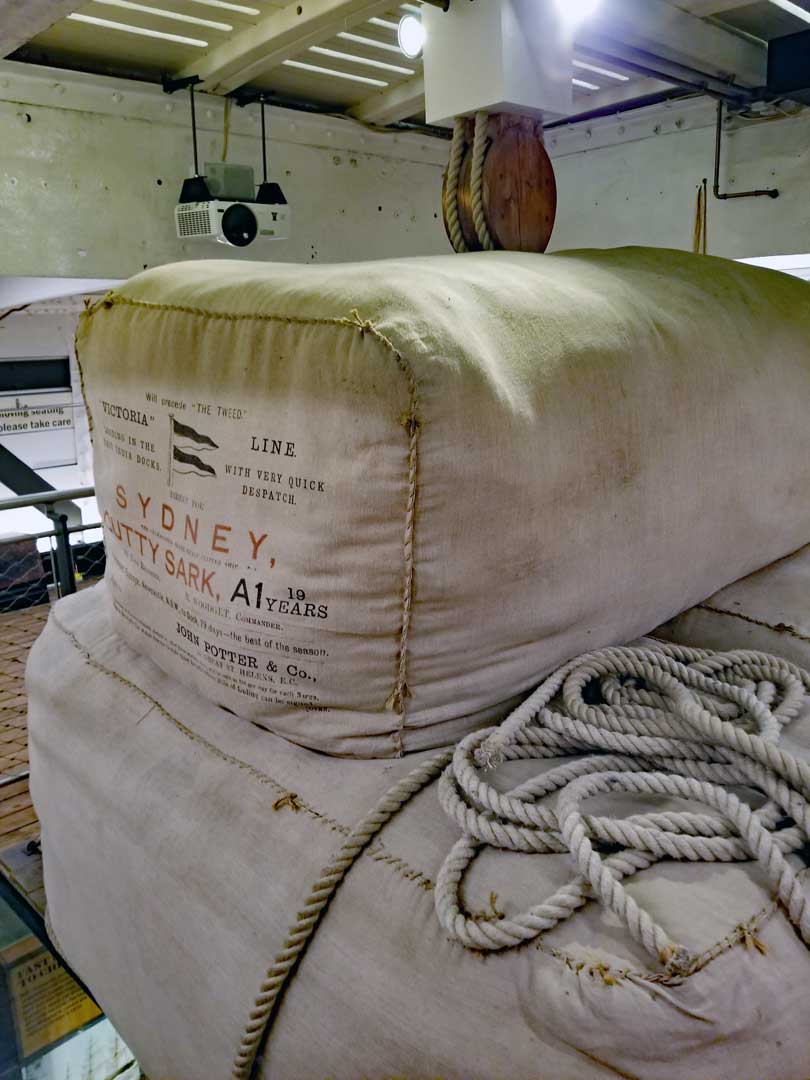
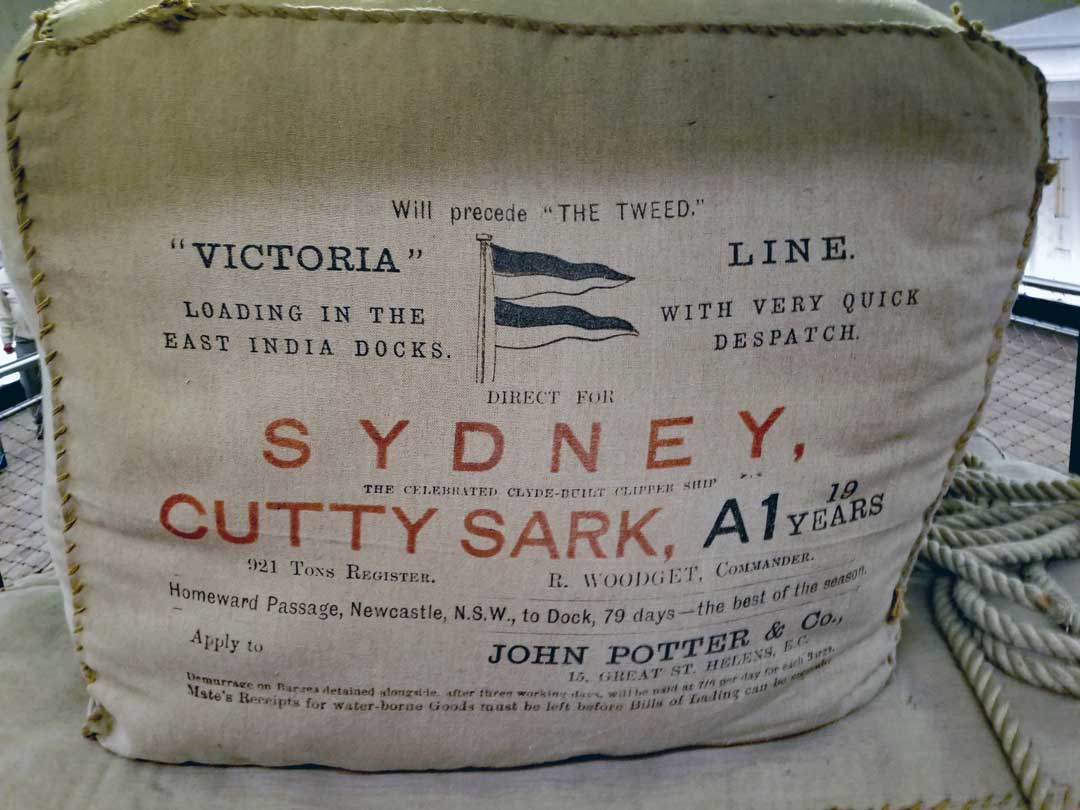
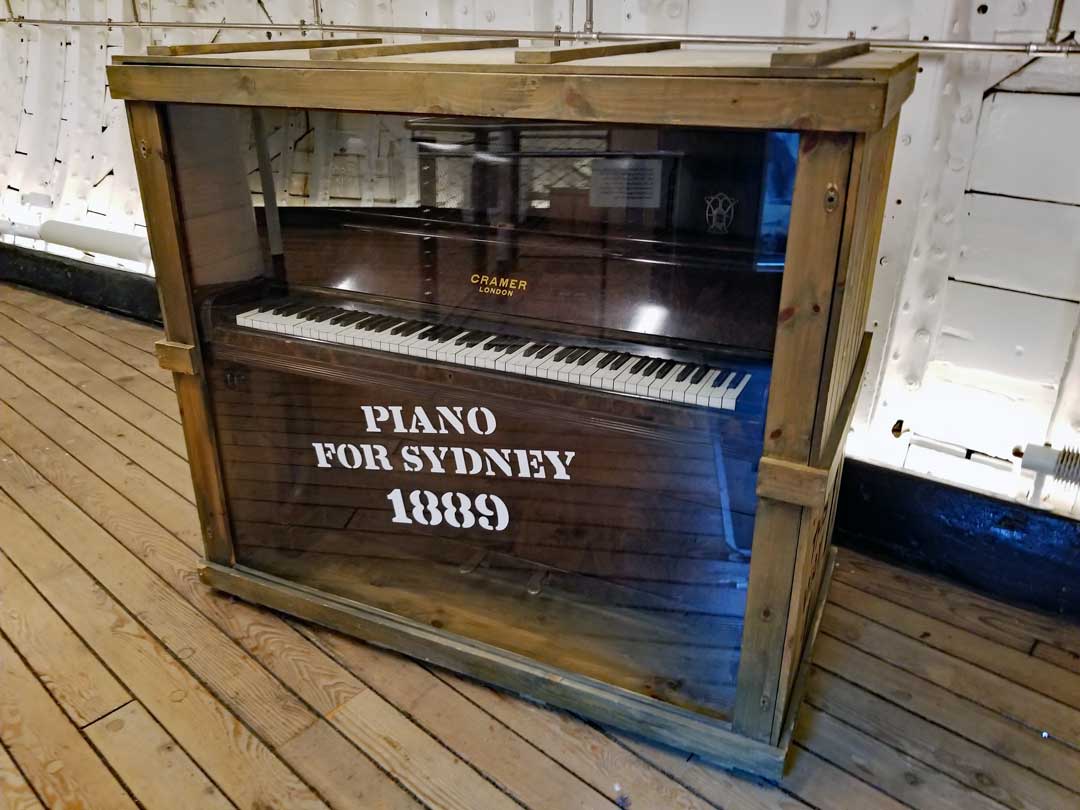
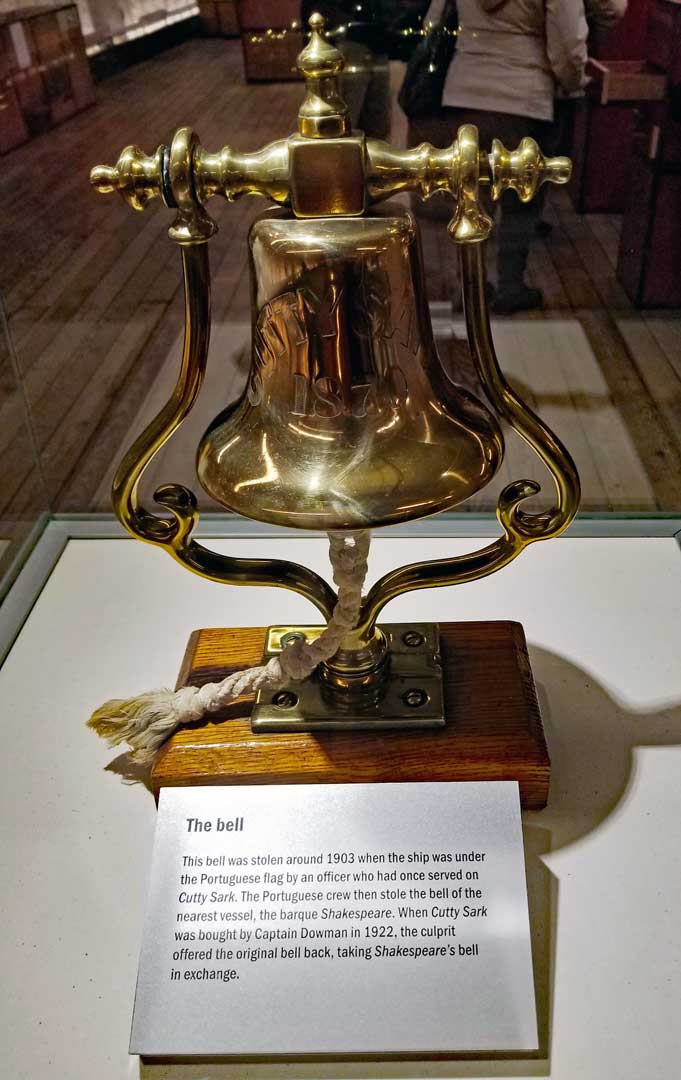
The name Cutty Sark was taken from the poem “Tam O’Shanter” written by Scottish poet Robert Burns. It was the nickname of the witch Nannie Dee who together with other witches and beings were chasing the farmer Tam O’Shanter when he was on his way home after a night of drinking in town. Nannie Dee eventually snagged his horses’ tail before he managed to cross the River Doon to safety because witches dare not cross water. Nannie Dee was wearing a Sark (Scottish term for a chemise or undergarment) since this was given to her as a child it was ‘cut’ meaning it was way too short. “Cutty sark” was the name Tam O’Shanter used when, after seeing Nannie Dee dancing outside the haunted church and thus awakening his desires, he cried out: “Weel done cutty-sark!”. The figurehead of the Cutty Sark is a carving of Nannie Dee.
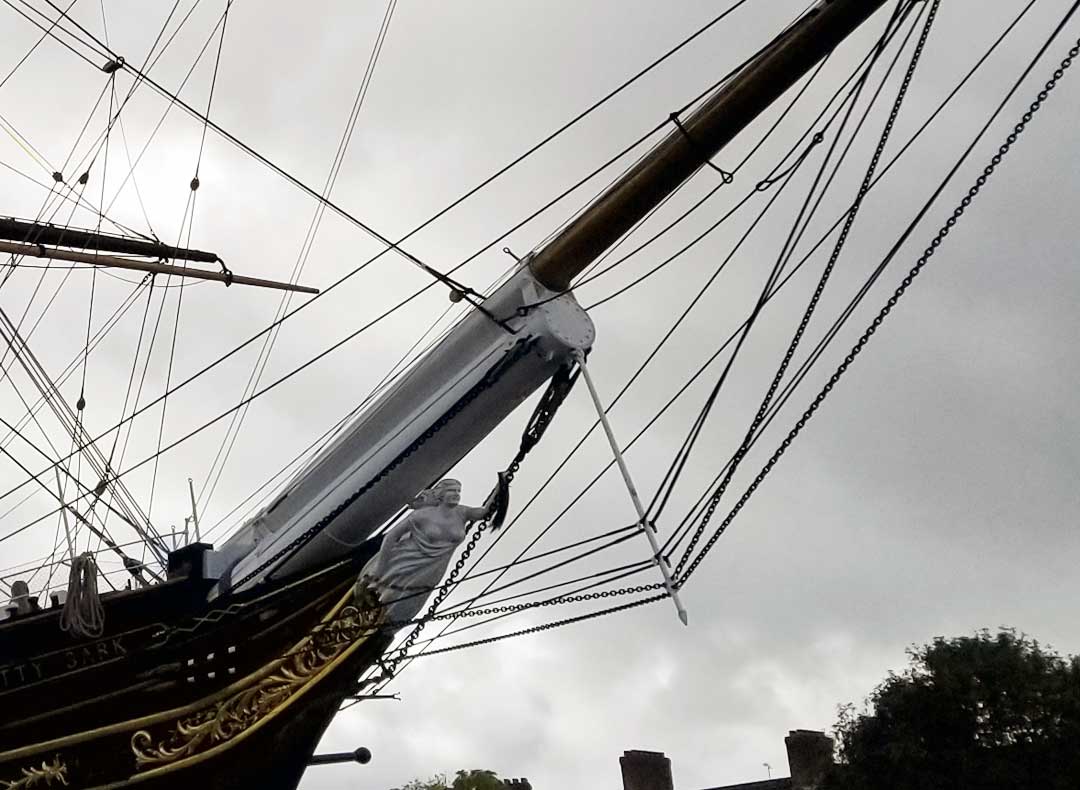
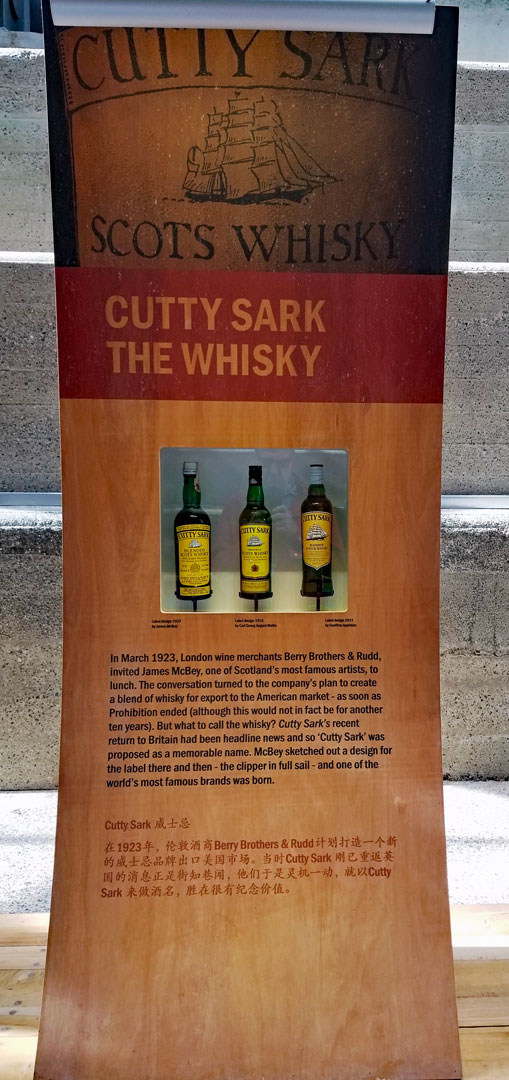
Cutty Sark Whisky was created on March 3 1923 and it was the brainchild of Berry Bros. & Rudd – London Wine & Spirits merchants that are still located at 3 St James Street in London. It is a range of blended Scotch Whisky and is a product of Edrington plc of Glasgow with offices located only 10 miles from where the Cutty Sark was built. The home of the blend is considered to be at the Glenrothes distillery in Speyside, Scotland. The currently used label (since 1955) has a drawing of Cutty Sark that was made by a Swedish artist, Carl Georg August Wallin .
